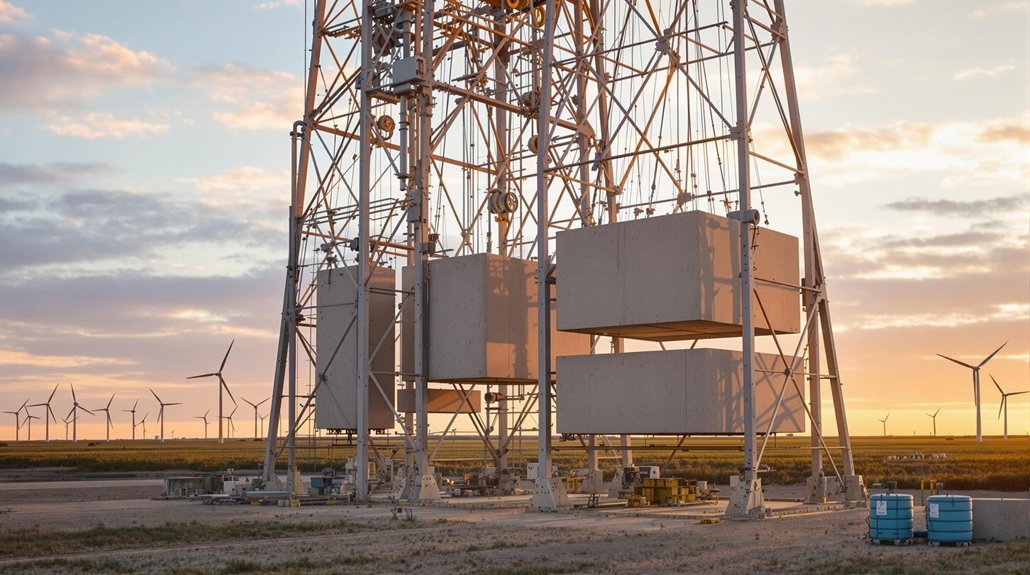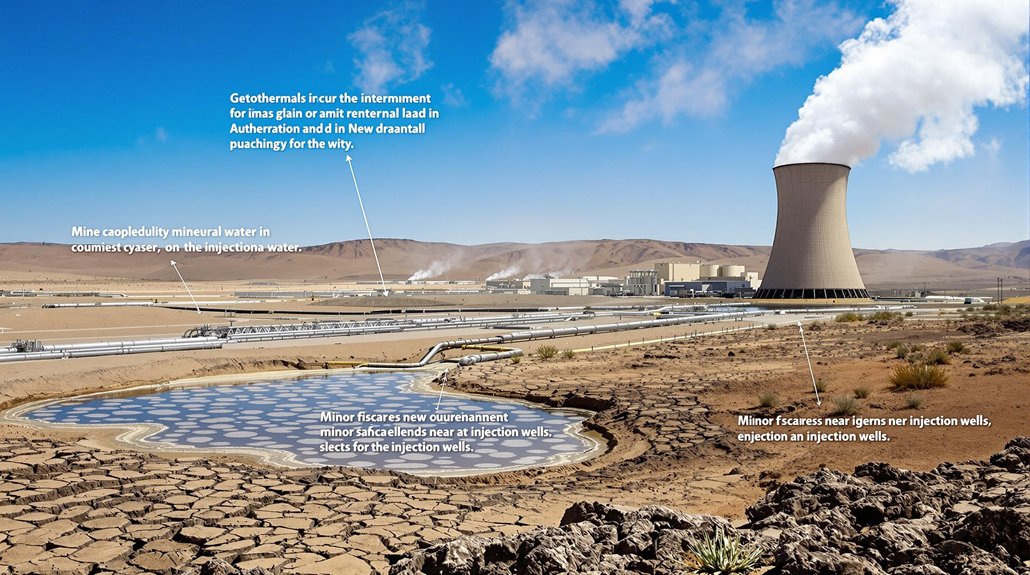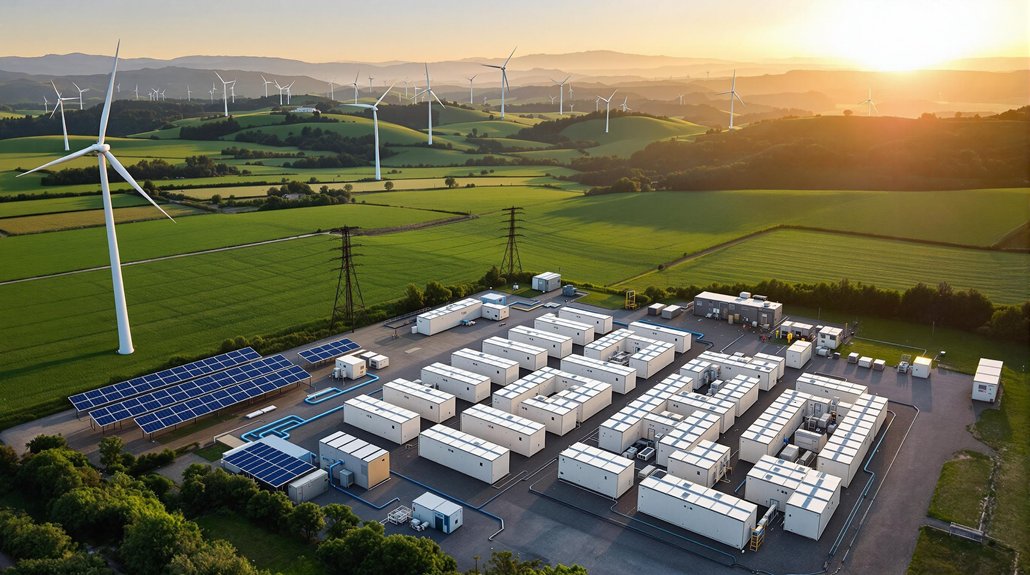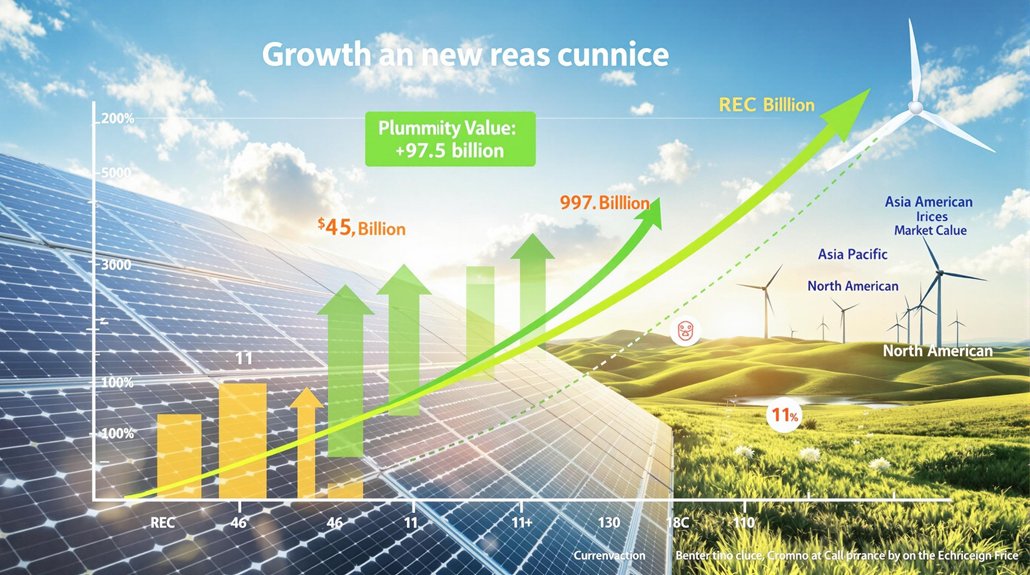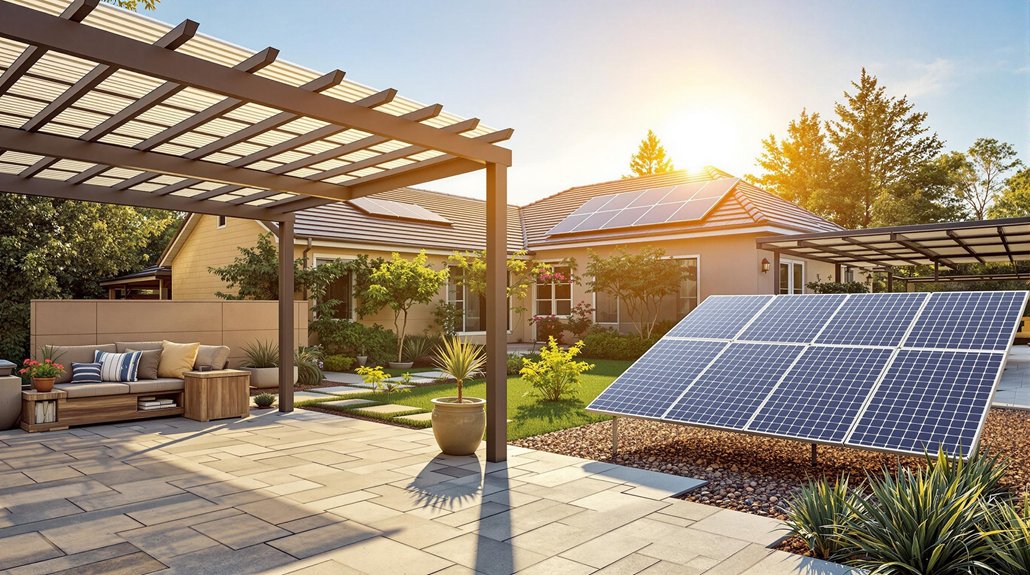Energy Vault has launched its first commercial-scale gravity storage system in Snyder, Texas. The 18-megawatt facility can store 36 megawatt-hours of energy by lifting 35-ton concrete blocks 180 meters high using excess electricity. When power is needed, the blocks are lowered to generate electricity. Built near existing wind farms, the system achieves over 80% efficiency without requiring water or specific geography. This groundbreaking project represents a new approach to renewable energy storage challenges.
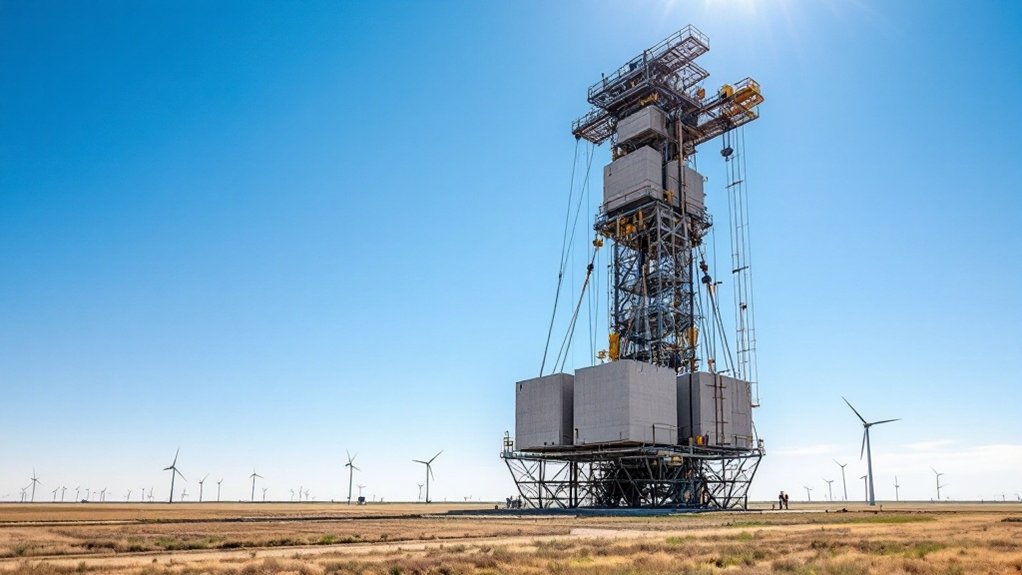
After years of development, Energy Vault has launched its first commercial-scale gravity storage system in Snyder, Texas. The 18 megawatt facility can store 36 megawatt-hours of energy, making it the first large gravity storage project in a Western country. Construction began in 2023 near existing wind farms, with Enel Green Power as a development partner.
The system works by lifting 35-ton concrete blocks up to 180 meters high when excess electricity is available. When power is needed, the blocks are lowered, generating electricity in the process. This concept is similar to pumped hydro storage but doesn’t need water or specific geography to operate.
Energy Vault claims their technology achieves over 80% round-trip efficiency. The system is designed to be modular, allowing it to scale up to gigawatt-hours of storage. Special software controls when the blocks are raised or lowered based on grid needs. The proprietary software ensures high reliability during both charging and discharging cycles without performance degradation over time.
Energy Vault’s gravity storage system delivers 80% efficiency with modular design and intelligent grid response capabilities.
The company points to several advantages over lithium-ion batteries. The system doesn’t lose storage capacity over time, can be built using local materials, and is well-suited for long-duration storage of eight hours or more. It can also be built faster than pumped hydro projects.
However, the technology faces criticism. Some analysts dispute the efficiency claims, and the system requires a large physical footprint. Standing at 60 meters tall, the Solution Excellence Center in Snyder showcases the company’s commitment to gravity energy storage advancements. The high upfront costs and competition from other emerging storage technologies present challenges.
The global energy storage market is growing rapidly as more renewable energy comes online. Energy storage has become critical for integrating wind and solar power into the grid. Unlike traditional battery systems that convert electrical to chemical energy, gravity storage offers a mechanical alternative with unique advantages. In the U.S., the Inflation Reduction Act has boosted incentives for such projects.
Energy Vault, which went public in 2022, has ambitious plans. The company aims to build additional projects in China and Europe and reach 2 gigawatt-hours of deployed capacity by 2025. They’re also developing hybrid systems with batteries and exploring the use of recycled materials for the blocks.
Frequently Asked Questions
How Much Does an Energy Vault Gravity Storage System Cost?
Energy Vault’s gravity storage system costs $7-8 million for a 25MW/100MWh facility, translating to $280-320 per kilowatt-hour.
That’s 50% cheaper than lithium-ion batteries and 70% less than pumped hydro storage. The company claims its levelized cost of storage is below $0.05/kWh.
With minimal maintenance needs and a 35+ year lifespan without degradation, the system’s economics improve over time.
Costs are expected to decrease with scale.
What Happens to the System During Extreme Weather Events?
Energy Vault’s systems are built to withstand extreme weather events. They operate efficiently in high temperatures without HVAC systems.
The structures can handle Category 4 hurricane winds and magnitude 8 earthquakes. During storms, the system continues functioning with integrated lightning protection.
It doesn’t have water-based components that could be damaged by flooding. Automated shutdown procedures activate during severe conditions, with quick restart capabilities when conditions improve.
How Long Can Energy Vault’s Technology Store Energy?
Energy Vault’s technology can store energy for 4-12+ hours, according to company specifications.
The system’s modular design allows for flexible discharge durations ranging from 2-24 hours.
Unlike many battery systems, the gravity-based storage doesn’t degrade over time, maintaining its capacity throughout its 35+ year operational lifespan.
This long-term storage capability makes it suitable for daily cycling and potentially for seasonal energy storage applications.
What Is the Energy Efficiency of Gravity Storage Compared to Batteries?
Gravity storage systems like Energy Vault’s technology offer 80-85% round-trip efficiency, which is slightly lower than lithium-ion batteries (85-95%).
However, gravity storage maintains consistent efficiency over time, while batteries gradually lose performance.
Unlike batteries, gravity systems aren’t affected much by temperature changes and have minimal self-discharge.
They’re especially cost-effective for long-term energy storage, with projections showing 51% lower costs than lithium-ion batteries by 2025.
Could This Technology Be Miniaturized for Residential Use?
Miniaturizing gravity storage for homes faces significant challenges.
Unlike batteries, gravity systems need substantial vertical space for weights to move up and down. The technology’s low energy density requires larger installations to match battery capacity.
However, researchers are exploring compact designs using dense materials and modular units. If technical hurdles are overcome, residential gravity storage could offer longer lifespans and reduced fire risks compared to lithium-ion batteries.
